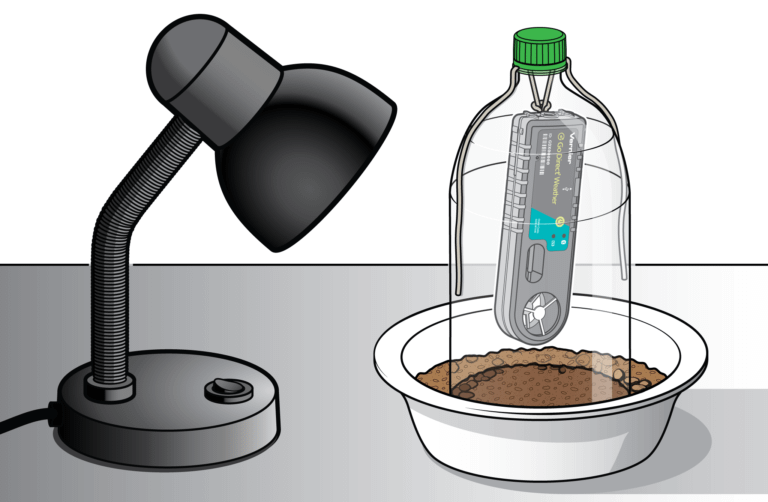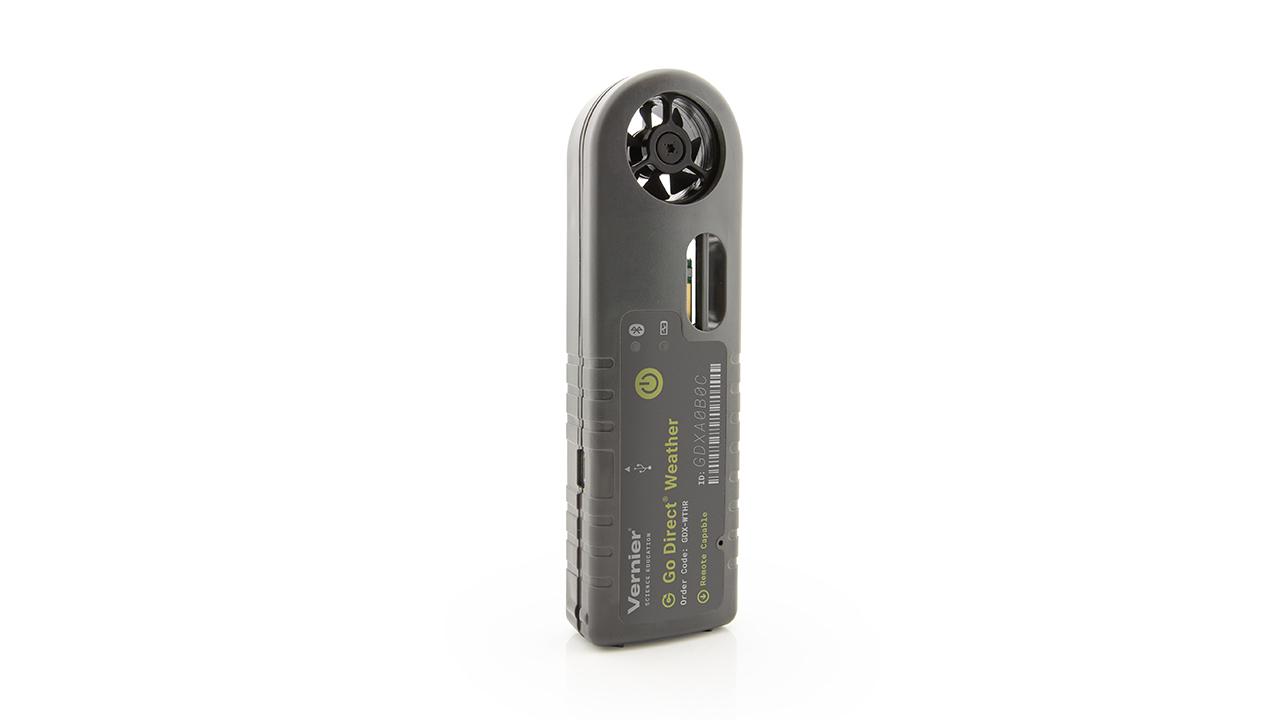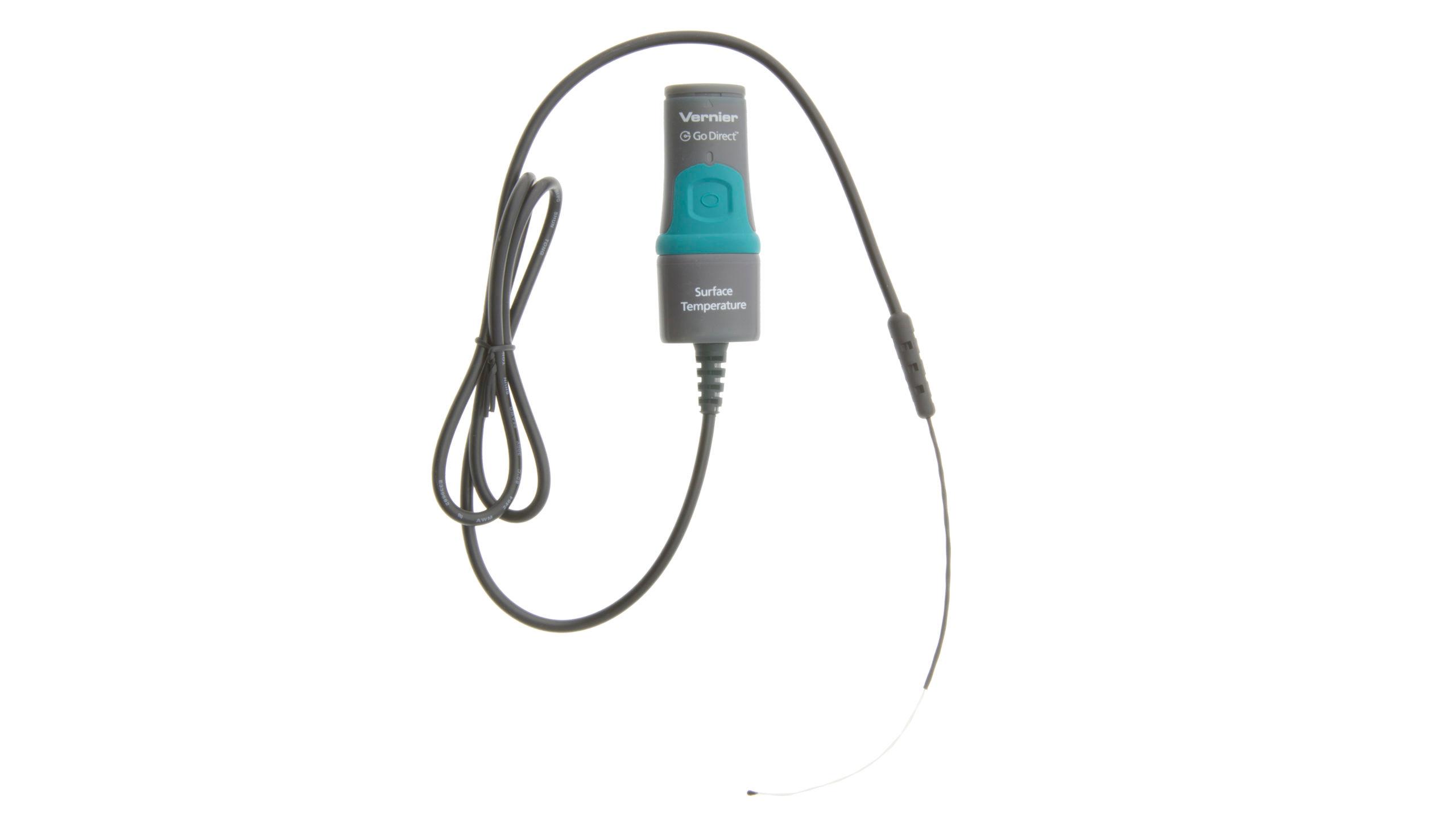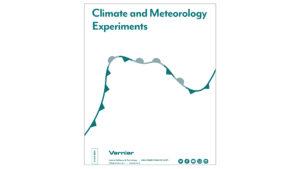Effect of Air Temperature on Humidity
Experiment #5 from Climate and Meteorology Experiments
- Subject
- Earth Science

Introduction
Humidity is a measure of the amount of water vapor in the air. When meteorologists report humidity, however, they are usually referring to the relative humidity. Relative humidity, reported in percent, is the amount of water vapor currently in the air compared to the amount it could hold at a specific temperature. For example, a measurement of 100% relative humidity means the air is saturated completely with water vapor at the current temperature. The maximum amount of water vapor air can hold varies depending on the temperature of the air. Air with a measurement of 60% relative humidity at 15℃ does not have the same amount of water vapor as the same reading at 30℃.
One way to measure relative humidity is to use an instrument called a psychrometer. A psychrometer can be made by using two thermometers or temperature sensors. One is kept dry (dry-bulb thermometer) and the other one is kept moist (wet-bulb thermometer). The wet-bulb thermometer cools as water evaporates from it. The drier the air, the faster the water will evaporate, causing a greater temperature drop due to evaporative cooling. Determining the temperature difference between the dry- and wet-bulb thermometers allows you to calculate the relative humidity.
In this experiment, you will use two temperature sensors to determine relative humidity at two different locations. Then, you will monitor the air temperature and humidity in a closed system to make a conclusion about the relationship between air temperature and relative humidity.
Objectives
- Determine relative humidity using two temperature sensors.
- Investigate the relationship between air temperature and relative humidity.
Sensors and Equipment
This experiment features the following sensors and equipment. Additional equipment may be required.
Ready to Experiment?
Ask an Expert
Get answers to your questions about how to teach this experiment with our support team.
- Call toll-free: 888-837-6437
- Chat with Us
- Email support@vernier.com
Purchase the Lab Book
This experiment is #5 of Climate and Meteorology Experiments. The experiment in the book includes student instructions as well as instructor information for set up, helpful hints, and sample graphs and data.



